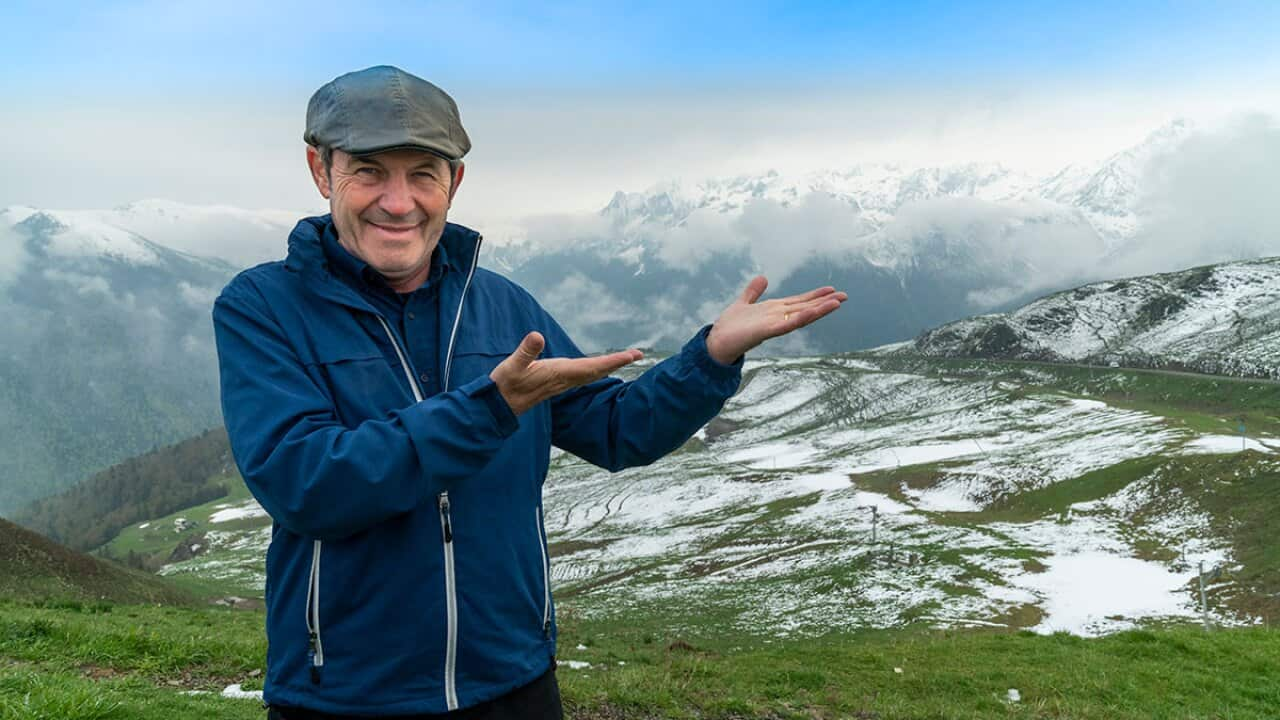To call the route of the Tour de France, 'picturesque' still doesn't quite do it justice.
Every year the world's most exciting bicycle race starts from a different location, and the only regular features of the route include the Final Stage finish, coming into the Champs-Elysées in Paris, and several stages which traverse the stunning Alps and the Pyrénées mountains.
The latter two large French regions are very different from one another but are outstandingly beautiful and hold their own magic. In the Alps, there are some fairly large, sophisticated towns - like Grenoble and Annecy. While the Pyrénées bordering France and Spain has more rustic, smaller towns that take their influence and culture from both countries.
In the Alps, there are some fairly large, sophisticated towns - like Grenoble and Annecy. While the Pyrénées bordering France and Spain has more rustic, smaller towns that take their influence and culture from both countries.

The Pyrénées charm is hard to ignore. Source: Taste le Tour with Gabriel Gaté
This year, some of my favourite days producing and presenting , were spent shooting in markets and in tucked away locations in the Pyrénées.
Every town and most villages have an outdoor market once or twice a week. Some larger towns have a covered market called, la Halle, opening five or six days a week. Often housed in century-old attractive buildings, they are run by a dozen or so dedicated local food artisans, including butchers, charcutiers, boulangers, pâtissiers, fishmongers, wine merchants and several regional speciality stores to give locals an agreeable one-stop shopping experience. On outdoor market days, local farmers install their stands either around the covered market, in the centre of the village square or in an open car park close to the centre.
On outdoor market days, local farmers install their stands either around the covered market, in the centre of the village square or in an open car park close to the centre.

My favourite moments were spent shooting in markets and in tucked away locations in the Pyrénées. Source: Gabriel Gate
Even in small towns, a market may have thirty traders attracting people from the region's rural area and about half of the traders are actual farmers while others are re-sellers of cheese, charcuterie and other foods. Many small farmers rely on markets to sell most of what they produce. The prices are very competitive as you can bypass retail costs and most importantly, the quality is simply outstanding. Some farmers only sell one or two seasonal products, like asparagus, strawberries, potatoes or salad greens. Local free-range meats and poultry are much prized and commonly sold cooked on a rôtisserie. However, the most common farmers found in a Pyrénées market are those with cheese in their sights and on their mind.
Some farmers only sell one or two seasonal products, like asparagus, strawberries, potatoes or salad greens. Local free-range meats and poultry are much prized and commonly sold cooked on a rôtisserie. However, the most common farmers found in a Pyrénées market are those with cheese in their sights and on their mind.

"I was transfixed by the huge cake cooked on a spit using red hot charcoal." Source: Gabriel Gate
This region's main fromage, the tome de bribes, is made with ewes' milk, but it is also common to find cheeses made with a mix of ewe's and cow's milk and even ewe's, cow's and goat's milk. The local milk is so flavoursome that many farmers also sell their homemade yoghurt and fromage blanc, which really are out of this world in flavour and richness. During filming, there are always pleasant surprises along the way and encountering a young pâtissier at the market of Bagnère de Luchon was one of those momentous delights. I was transfixed by the huge cake cooked on a spit using red hot charcoal. The buttery cake called 'gâteau à la broche', is layer-upon-layer of cake batter being cooked into a kind of funnel cake.
During filming, there are always pleasant surprises along the way and encountering a young pâtissier at the market of Bagnère de Luchon was one of those momentous delights. I was transfixed by the huge cake cooked on a spit using red hot charcoal. The buttery cake called 'gâteau à la broche', is layer-upon-layer of cake batter being cooked into a kind of funnel cake.

This region's main fromage, the tome de bribes, is made with ewes' milk. Source: Gabriel Gate
In the market of Saint Lary Soulan, a cook prepares a popular dish of frog's legs flavoured with garlic and herbs for people to take away and at the same market a baker sells a wide selection of family-sized local fruit pies, called croustades and every time I come to the Pyrénées, I always feel the same delight come over me - I simply wish I could taste everything!
airs every night from Saturday 7 July and finishes Sunday 29 July 2018. Visit the website to catch-up on episodes online, scroll through recipes or find out more about the show.




